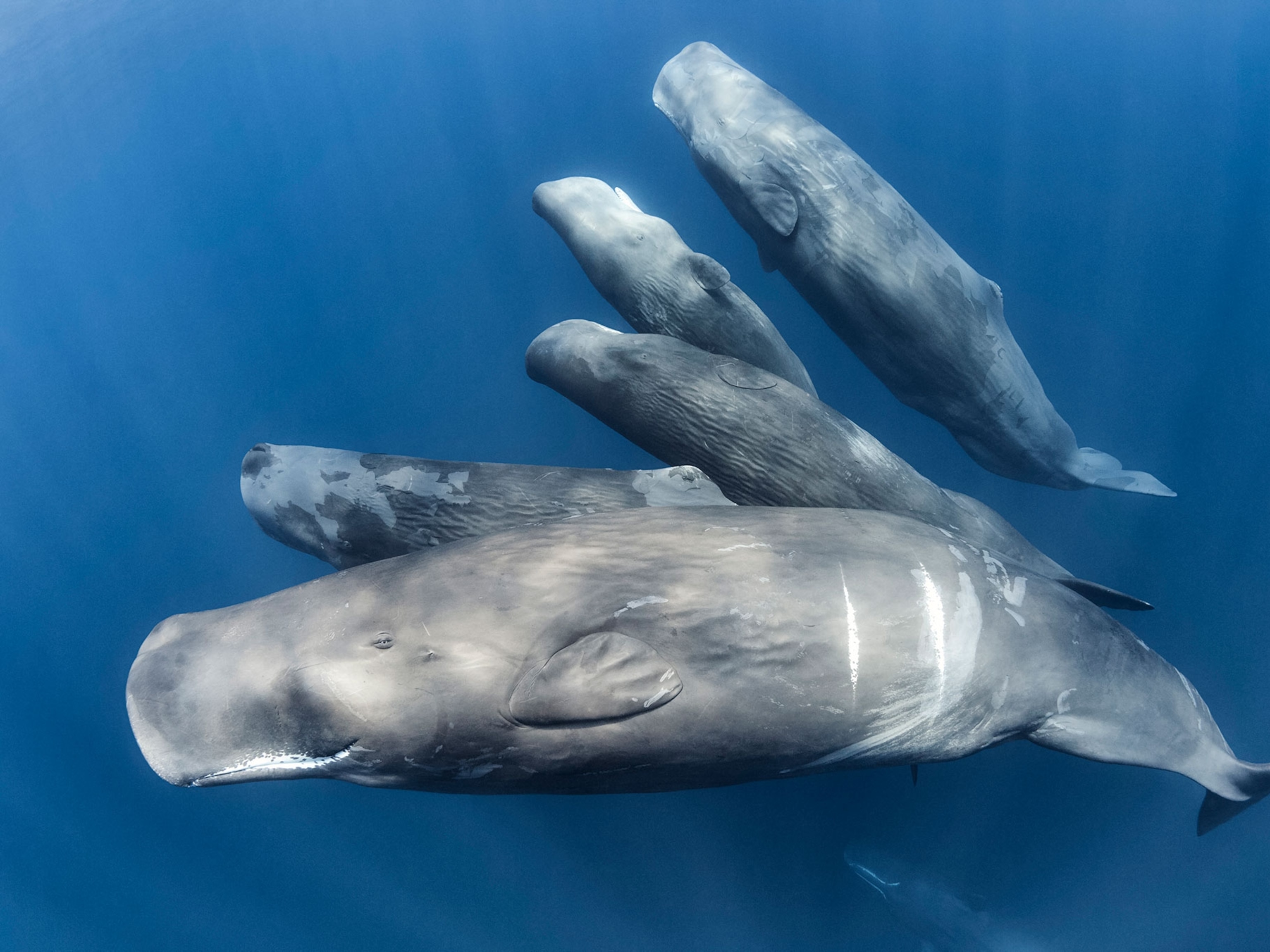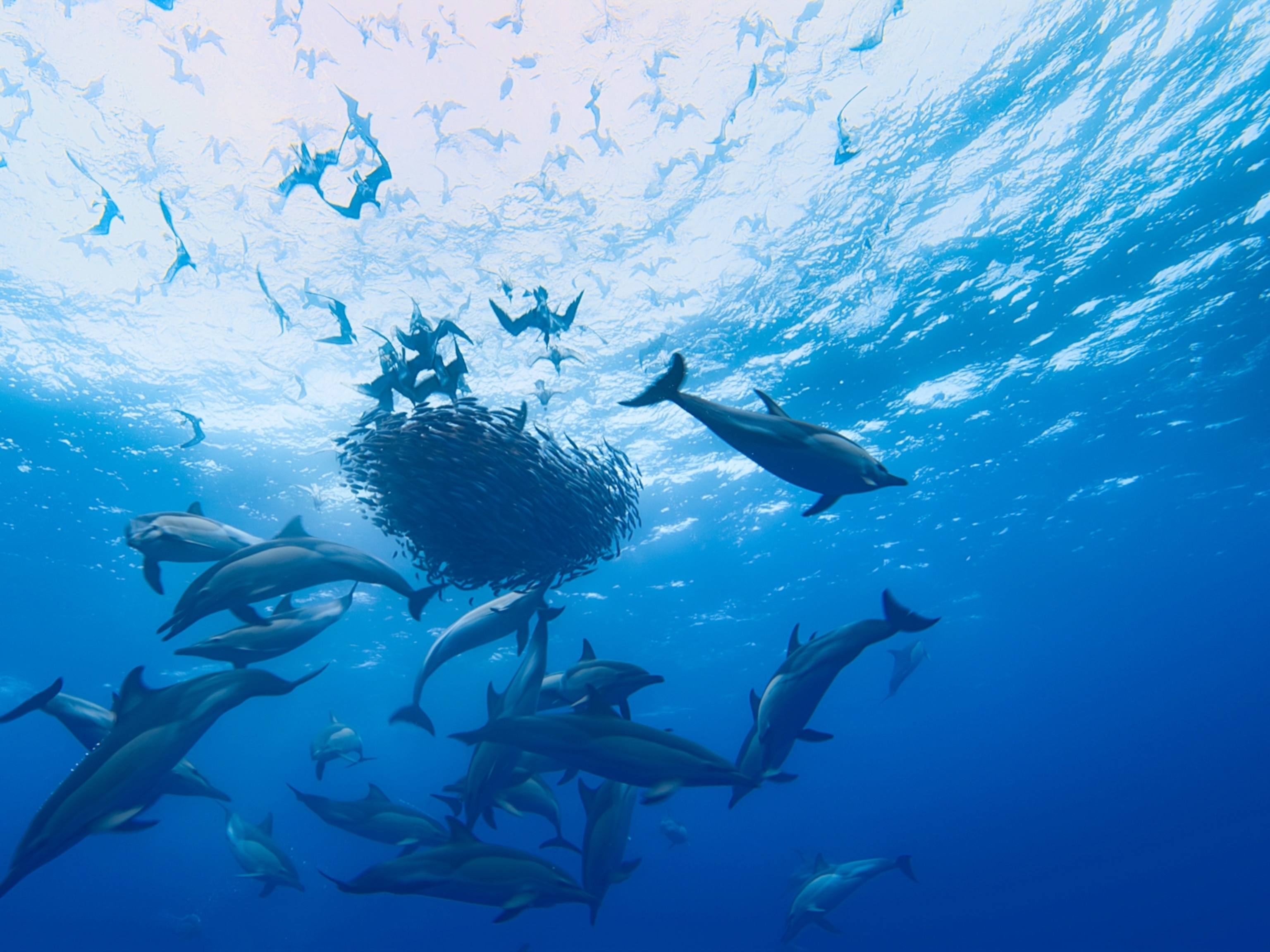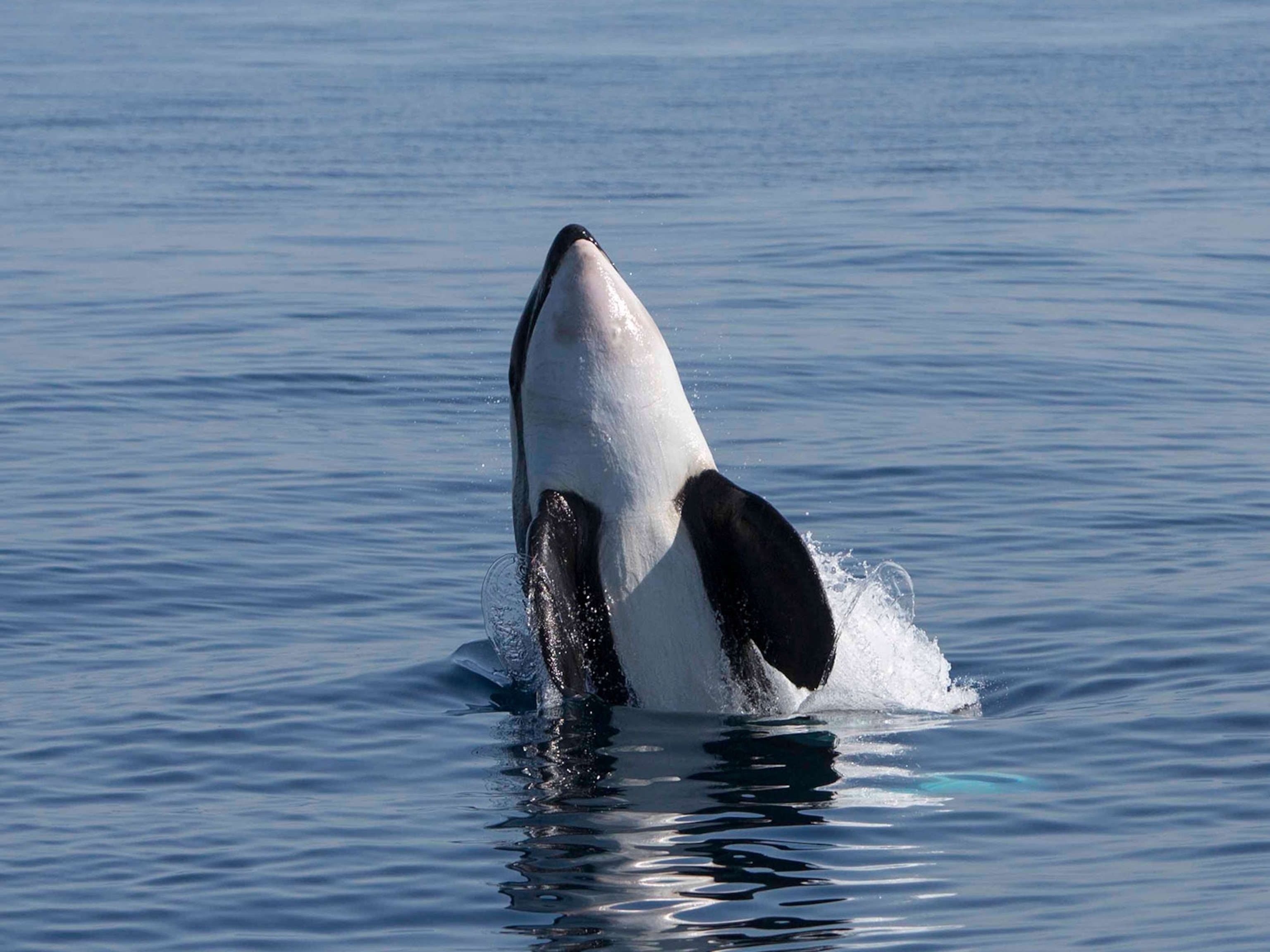Sperm Whales Found Full of Car Parts and Plastics
The shocking discoveries add to a mysterious string of sperm whale strandings around the North Sea since the start of the year.
Fishing gear and an engine cover are just some of the startling contents found inside the stomachs of sperm whales that recently beached themselves on Germany’s North Sea coast.
The 13 sperm whales washed up near the German state of Schleswig-Holstein earlier this year, the latest in a series of whale strandings around the North Sea. So far, more than 30 sperm whales have been found beached since the start of the year in the U.K., the Netherlands, France, Denmark, and Germany.
After a necropsy of the whales in Germany, researchers found that four of the giant marine animals had large amounts of plastic waste in their stomachs. The garbage included a nearly 43-foot-long (13-meter-long) shrimp fishing net, a plastic car engine cover, and the remains of a plastic bucket, according to a press release from Wadden Sea National Park in Schleswig-Holstein.
However, “the marine litter did not directly cause the stranding,” says Ursula Siebert, head of the Institute for Terrestrial and Aquatic Wildlife Research at the University of Veterinary Medicine Hannover, whose team examined the sperm whales.
Instead, the researchers suspect that the whales died because the animals accidentally ventured into shallow seas.
Male sperm whales normally migrate from their tropical or subtropical breeding grounds to colder waters at higher latitudes. The species is one of the deepest diving animals in the cetacean family, known to plummet as far as 3,280 feet (1,000 meters) in search of squid, its favorite food.
The beached whales were all young males between the ages of 10 and 15, and the necropsies revealed that they died of heart failure. The team believes this particular group mistakenly swam into the North Sea, a shallower zone in between the U.K. and Norway. There the whales could not support their own body weights, and their internal organs collapsed.
“It is thought that the sperm whales may have got lost and entered the North Sea (possibly chasing squid), where the sea floor is not deep enough, causing the whales to become disorientated and die,” Danny Groves, a spokesperson for the nonprofit Whale and Dolphin Conservation (WDC), wrote in an email.
Ocean Mystery
According to the WDC, whales and dolphins may strand for many reasons, such as excessive noise pollution from ships and drilling surveys or even subtle shifts in Earth’s magnetic field. In addition, pilot whales that beached off the coast of Scotland three years ago showed high levels of toxins from ocean pollution, which scientists linked to stress on their brains that may have caused disorientation.
In this case, recent changes in local weather may also have played a role: “At the moment we believe that the most probable answer is that we had special conditions in the North Atlantic which may have influenced warm water and prey distribution and storm activities,” says Siebert.
For now, though, no one is sure why so many sperm whales are showing up around the North Sea.
“We may never know the exact cause,” writes Groves.

Siebert adds that if the whales had survived, the garbage in their guts might have caused digestive problems down the line. At the time of death, the animals were in decent shape and, in addition to the debris, the scientists found thousands of squid beaks in the whales’ stomachs.
But when whales and dolphins ingest lots of marine litter, either accidentally or because they mistake the trash for prey, it can cause physical damage to their digestive systems. The trash may eventually give the animals the sensation of being full and reduce their instinct to feed, leading to malnutrition.
While the garbage may not have been lethal for these whales, “the plastic debris in their stomachs is a horrible indictment of humans,” adds Hal Whitehead, a whale researcher at Dalhousie University in Nova Scotia, Canada.
During the 19th and 20th centuries, sperm whales were relentlessly hunted for their oil and blubber, a practice that went into decline by the close of the 1980s. The end of widespread commercial whaling helped the global population increase, but the whales clearly still face threats from ship collisions, fishing nets, and ocean pollution.
Follow Wajeeha Malik on Twitter.
Correction: An earlier version of this story incorrectly stated that the sperm whale is the deepest diving animal in the cetacean family. In 2014, researchers found that Cuvier beaked whales actually dive deeper.





